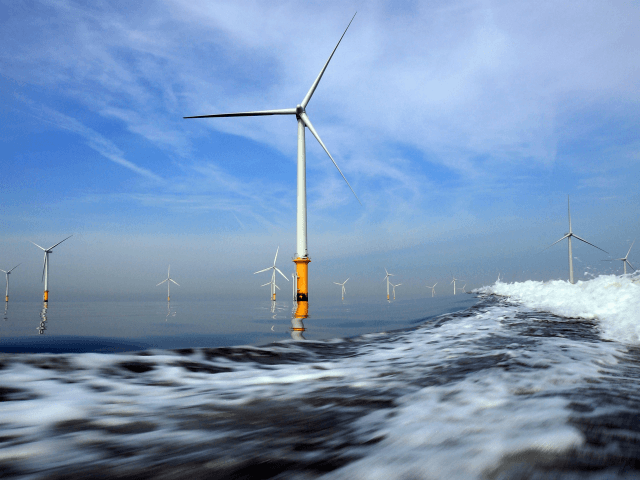The British taxpayer will be footing the majority of a record £9.3 million bill that was paid to wind farms not to run their giant turbines.
On Friday, over 80 wind farms in England and Scotland were given “constraint payments” from the National Grid in exchange for shutting down production of their supposedly green energy. The payout is nearly double the previous record of £4.8 million in October of 2018.
The reason for the shutdown of production was so that the grid would not be overloaded with energy during a time in which many businesses are shut due to the coronavirus lockdown.
The British public will be on the hook for £6.9m that was sent to 66 Scottish wind farms and an additional £1.9m to 14 sites in England.
The director of the Renewable Energy Foundation, Dr John Constable told The Telegraph: “Overdeployment of renewables in the UK, particularly uncontrollable wind and solar, has resulted in a very fragile electricity system, which is inflexible and unable to deal with accidents and unexpected circumstances at a reasonable cost to consumers.”
“Grid balancing expenditure so far this year is already horrific and by the end of the summer it will be terrifying,” Constable added.
“This is a national embarrassment and a disgrace to the management of the electricity sector who have complacently allowed this crisis to develop over the last decade,” he lamented.
The Renewable Energy Foundation revealed that 86 wind farms across the country were given a record £136 in “constraint payments” last year alone.
The unpredictable nature of wind electricity and other forms of “green energy” like solar power is referred to as intermittency — one of the biggest problems the renewable industry has faced in trying to become viable.
When there is not enough wind, the machines produce little to no power and when there are high levels of wind, the output places strain on electrical grid systems as there is currently no viable storage system for the energy.
Though often hailed as a solution to the supposed “climate emergency” the true environmental costs of wind turbines is relatively high. The industrial strength magnets that are required to generate electricity out of wind are reliant on rare earth minerals such as neodymium, a mineral that is mostly mined in communist-controlled China.
A 2011 report by journalist Simon Parry found that the mining of neodymium in China had resulted in the creation of a toxic lake outside the Inner Mongolian city of Baotou. Cancer rates soared amongst the neighbouring villagers, and children were reported to have been born with soft bones.
“The reality is that, as Britain flaunts its environmental credentials by speckling its coastlines and unspoiled moors and mountains with thousands of wind turbines, it is contributing to a vast man-made lake of poison in northern China,” wrote Parry.
In January, Boris Johnson’s government pledged to quadruple the amount of wind energy produced offshore as a part of the government’s green agenda, which promises to make the country carbon neutral by 2050.
Follow Kurt on Twitter at @KurtZindulka

COMMENTS
Please let us know if you're having issues with commenting.